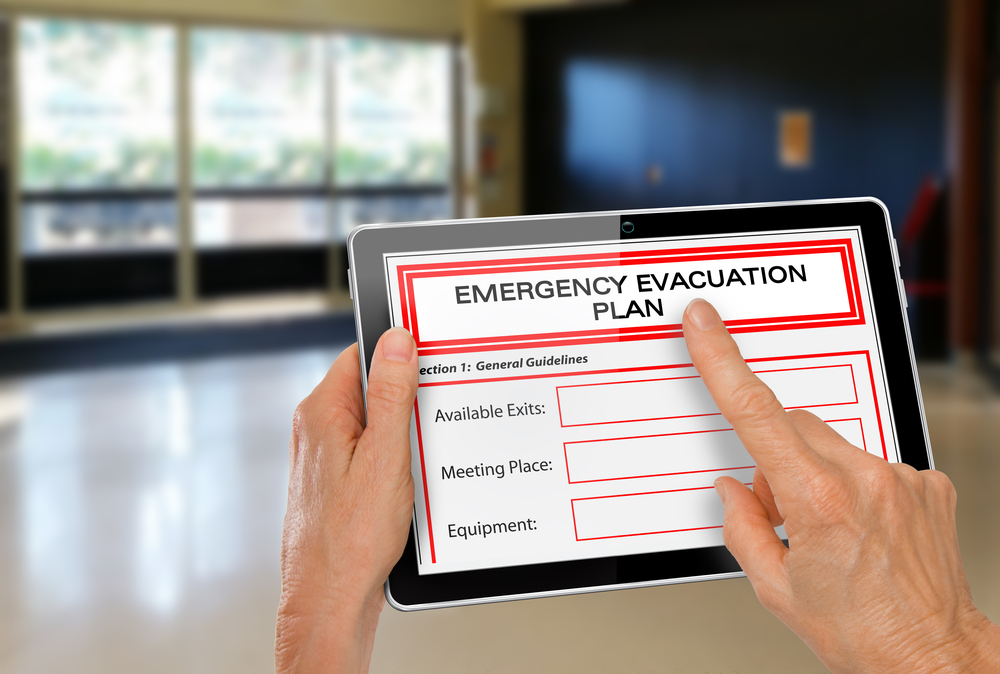It would be impossible (hopefully) to find any Australian school that does not have a detailed emergency, evacuation and lock-down plan. Schools pride themselves on having high levels of care for their students, and they understand that this requires them to have detailed plans in place to keep the children safe in the event of an emergency.
There are also a number of external sources that make emergency plans mandatory for schools: the various registration or Education Act requirements in each State and Territory, and with the exception of Western Australia, all schools are required under the Federal Education and Care Services National Law and the Education and Care Services National Regulations 2011 (Regulations 97, 168) ‘to have policies and procedures which set out instructions for what must be done in an emergency and to have an emergency and evacuation floor plan. The policies and procedures must be based on a risk assessment that identifies potential emergencies relevant to the service.’ This can be referenced in the Guide, which can be accessed here.
Schools regularly practice their evacuation drills and some also practice their lock-down procedures. This is particularly evident in the lead up to bush-fire season and, unfortunately, as reported in School Governance, many schools were forced to test their plans and procedures during the spate of ‘bomb threat’ hoax calls that took place in early 2016.
However, schools are also employers and owners or occupiers of premises under the respective workplace health and safety legislation in each State and Territory, and while this also mandates emergency plans, it goes beyond the scope of the more familiar duty of care to students.
A recent inquest into the death of an Irish tourist at Sydney's 2014 Vivid Festival found that the festival organisers breached health and safety legislation by failing to identify all of the foreseeable hazards entailed in the festival and instituting emergency planning which took those hazards into consideration. While they might not have been able to prevent an inebriated person falling into the Harbour, the death may have been prevented if there had been appropriate emergency planning, and staff were given an adequate opportunity to familiarise themselves with their emergency response obligations.
Schools will have daytime emergency plans in place which take into account likely risks and how to manage them, however, with the exception of bushfire and excursion risks, how many schools have emergency plans for an event that takes place after normal school hours or is not part of the normal school curriculum? Do they have plans in place for the additional hazards arising out of after-hours events such gala days and fetes, parent/teacher interview evenings, drama productions or even Saturday morning sport?
Additional obligations and risks also arise from schools 'sharing' their facilities with community groups (funding for new facilities in the Federal Building the Education Revolution (BER) program came with a requirement to share those facilities with community groups) or hiring them to their own Parents and Friends associations, sporting associations, and private individuals.
Schools, before conducting after hours’ events or leasing/hiring or sharing their facilities with outside groups, must determine the extent of their duty of care to provide emergency procedures or whether to ensure that the hiring bodies have emergency procedures when they use the school facilities after hours.
If the events are a school activity or school sanctioned, then there is no argument. The school is responsible for the duty of care for all students (see our ‘duty of care’ after hours article in School Governance earlier this year), staff, visitors, contractors and volunteers; school sanctioned emergency plans must be put into place. Thought should be given to what additional risks may be involved with the non-student participants, such as traffic, a greater range of possible illnesses, a greater number of injuries, and possibly different types of injuries. First aid facilities will need to cater for these as well as ensuring the availability of medical facilities after normal school hours. If alcohol is being served, what additional hazards could there be from inebriated individuals and what control or mitigation measures need to take this into account?
If the events are not a school activity, for example, if the ovals and gymnasium have been hired by a sporting club for Sunday cricket matches, then In the harmonised workplace health and safety States and Territories (all except WA and Victoria), the school would be required to "consult, co-operate and co-ordinate" with the hirers to ensure the health and safety of everyone affected by the activities, to the extent of each of their control and influence. This is roughly similar to the situation in WA and Victoria.
At the very least, the school has an obligation to clarify with the hirers in advance to determine:
- What school hazards need to be identified to the hirers?
- Does the hirer of the facilities have an emergency plan?
- Who will be responsible for ensuring that all elements of an emergency plan are in place: for example does the school need to ensure that gates can be opened to allow an ambulance to drive to a casualty on the oval? If indoors, what fire and evacuation facilities are in place which need to be communicated to the hirers?
- Who provides the first aid kits?
- What insurances do the school and the hirer have to ensure that there is adequate coverage for damage and injury
- What provisions should be placed in the contract to hire the facilities that would ensure that the school fulfilled its obligations for the health and safety of those using its premises?
The school should then ensure that there are clear provisions in the contract to hire the facilities to address all of the above.
As a note of caution, there are insurance implications involved in hiring of school facilities to other groups. Schools should, first and foremost, check that they have adequate insurance cover in place and that the hiring out of the facility does not void the insurance policy. Under usual circumstances, a school’s insurance policies would only cover those functions and activities which were directly associated with the school. Schools should use contractual terms to ensure that non-school hirers of school facilities have public liability cover and that any other insurances that may be required are arranged independently of the school.



